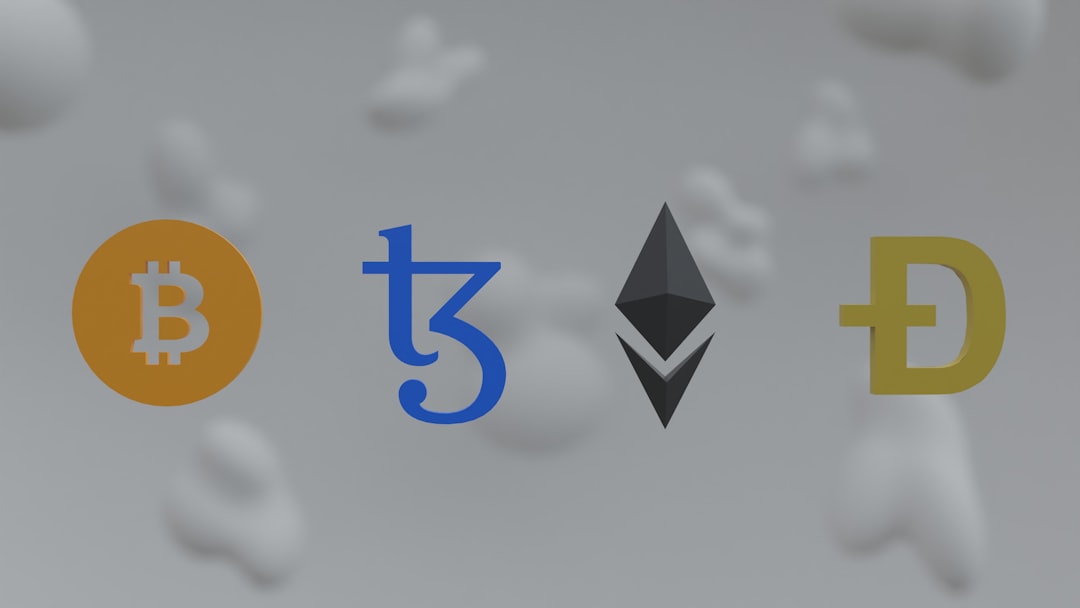Why DApps Development is Revolutionizing Modern Applications
DApps development is revolutionizing applications by using blockchain to create decentralized experiences. Unlike traditional apps on centralized servers, decentralized applications (DApps) run on peer-to-peer networks, giving users full control over their data.
Quick Answer for DApp Development:
- What it is: Building apps on blockchain networks instead of central servers.
- Key components: Smart contracts, frontend, blockchain, wallet integration.
- Popular platforms: Ethereum, Solana, Polygon, Binance Smart Chain.
- Essential tools: Solidity, Truffle, Hardhat, Web3.js, MetaMask.
- Development steps: Ideation → Architecture → Smart contracts → Frontend → Testing → Deployment.
- Typical cost: $5,000-$150,000+ depending on complexity.
The global blockchain market is projected to hit $69.04 billion by 2027, with Ethereum hosting over 3,500 DApps as of 2021. This growth signals a shift toward apps that prioritize transparency, security, and user ownership.
DApps provide zero downtime, censorship resistance, and built-in crypto payments. However, they face challenges like complex UX, scalability limits, and higher development costs. Understanding the full development lifecycle is key to navigating this landscape and building successful DeFi protocols, NFT marketplaces, or other decentralized solutions.

Understanding DApp Fundamentals: Core Concepts and Architecture
DApps development means building applications that live on the internet without a single company controlling them. A DApp, or decentralized application, runs on a blockchain or peer-to-peer network instead of a centralized server. This means your app is distributed across thousands of computers worldwide, making it incredibly resilient.
Several core features make DApps unique. Decentralization ensures no single entity has control. Immutability means data written to the blockchain is permanent and unchangeable, which you can learn more about in this guide on immutability. This leads to powerful censorship resistance—no single authority can shut down a DApp. Combined with zero downtime, your application remains available 24/7.
At the heart of every DApp are smart contracts: self-executing code containing the application’s business logic. They automate processes without human intervention, ensuring data integrity as every transaction is cryptographically secured and verifiable. We cover this topic in our Smart Contract Development resources. Most DApps are also open-source, building trust through transparency.

How DApps Differ from Traditional Applications
The key difference between DApps and traditional apps is control. Traditional apps use centralized servers, creating a single point of failure and giving companies ownership of user data. DApps run on peer-to-peer networks, eliminating this vulnerability.
This shift fundamentally changes data ownership, empowering users with control over their information. DApps operate in a trustless environment, where trust is placed in transparent, verifiable code rather than a corporation. They also feature built-in payments via cryptocurrencies, enabling new business models impossible with traditional apps.
Key Benefits and Inherent Challenges
DApps development offers compelling benefits but also comes with challenges.
Benefits:
- Anonymity: Users interact via cryptographic addresses, not personal identities.
- Improved Security: A decentralized structure eliminates single points of attack.
- User Empowerment: Users own their data and can often participate in governance.
Challenges:
- Usability: Many DApps are less polished than traditional apps, though this is improving.
- Scalability: High network traffic can lead to delays and high fees.
- Maintenance: The immutability of smart contracts makes bug fixes and upgrades complex.
- Network Delays: Can affect real-time interactions.
Despite these problems, the DApp space is rapidly evolving, with new solutions emerging to overcome these limitations.
Choosing Your Stack: Platforms and Tools for DApp Development
Choosing your blockchain platform and tools is the foundation of your dapps development journey. At Web3Devs, we’ve been helping developers make these critical choices since 2015.
Leading Blockchain Platforms for DApps
Several excellent platforms exist, each with unique strengths.
Ethereum is the original smart contract platform, boasting the largest ecosystem and community support. Its main drawback is high gas fees during peak times, though solutions like Ethereum Layer 2 Rollups are mitigating this.
Solana is built for speed, handling over 65,000 transactions per second at a very low cost. It’s ideal for high-frequency applications like gaming. Learn more about its Solana Blockchain Efficiency.
Polygon offers a balance, providing Ethereum’s security with higher speed and lower costs as a Layer 2 solution.
Binance Smart Chain (BSC) is another popular choice for its balance of speed and cost, especially in DeFi. EOS targets enterprise-grade applications with a focus on scalability.
| Platform | Key Strength | Transaction Speed (TPS) | Average Transaction Cost | Smart Contract Language |
|---|---|---|---|---|
| Ethereum | Ecosystem, Security | ~15-30 | $0.50-$5+ | Solidity |
| Solana | Speed, Low Fees | 65,000+ | ~$0.00025 | Rust, C, C++ |
| Polygon | Scalability (L2) | 7,000+ | Very Low | Solidity |
| BSC | Balance, Low Fees | ~100 | Low | Solidity |
| EOS | Scalability, Usability | ~1,000-4,000 | Very Low/Free | C++ |
Essential Tools for Your First Project
Once you’ve chosen a platform, you’ll need the right tools.
- Node.js: The runtime environment for your development setup.
- Truffle Framework: A suite for compiling, testing, and deploying smart contracts.
- Ganache: A personal blockchain for local testing without spending real crypto.
- MetaMask: A browser extension that acts as a wallet and bridge to the blockchain for users.
- Web3.js and Ethers.js: Libraries that connect your frontend to the blockchain.
- Solidity: The most popular language for writing smart contracts, with a syntax similar to JavaScript. See the Solidity documentation to get started.
- Hardhat: A flexible alternative to Truffle, known for its powerful debugging features.
- VS Code with a Solidity extension: An IDE that simplifies coding with syntax highlighting and autocompletion.
For more options, see our guide on Web3 Development Frameworks.
The DApps Development Blueprint: A Step-by-Step Tutorial
Building a DApp follows a clear path from idea to launch. At Web3Devs, we use a proven dapps development process to turn concepts into reality. This roadmap emphasizes rigorous testing to ensure success.

Step 1: Ideation and Proof-of-Concept
Every great DApp starts by solving a real problem that blockchain can uniquely address. Focus on issues where transparency, immutability, or decentralization offer a clear advantage over traditional solutions.
- Identify a problem: Find a genuine pain point, like supply chain opacity or unfair artist compensation.
- Define your solution: Clarify what your DApp will do and how blockchain makes it better.
- Create a whitepaper: Outline your DApp’s purpose, mechanics, and value proposition to guide your project.
- Build a proof-of-concept (PoC): Create a minimal version to validate your core idea’s feasibility before committing to full development. A solid understanding of Blockchain Architecture is vital here.
Step 2: Designing the DApp Architecture and UX
This stage bridges technical design and user experience. A key decision is determining what logic and data go on-chain versus off-chain. Core business logic and value transfers belong on-chain in smart contracts, while large files or frequently updated data are better stored off-chain (e.g., on IPFS).
Create wireframes and user flow maps to design an intuitive interface. Pay close attention to the wallet connection process, as it’s often a user’s first interaction with Web3 and a common drop-off point.
Step 3: Smart Contract and Backend DApp Development
The smart contract is the heart of your DApp, containing unchangeable rules that govern its operation.
- Write contracts in Solidity: Program with security and gas efficiency in mind, as deployed code is difficult to alter.
- Implement business logic: Encode your DApp’s core functions—like token transfers or voting—into the contract.
- Test rigorously: Use frameworks like Truffle or Hardhat to run comprehensive tests covering all possible scenarios.
- Prioritize security: Follow best practices to prevent exploits. With billions lost to hacks, security is paramount. Our experience with Solidity for Business ensures your contracts are robust.
Step 4: Building the Frontend User Interface
An intuitive frontend is crucial for user adoption.
- Choose a framework: React and Vue are popular choices for their robust Web3 integration.
- Connect to the blockchain: Use libraries like Web3.js or Ethers.js to handle communication between your UI and the blockchain.
- Display on-chain data: Fetch and show users their token balances, transaction histories, and other relevant contract data.
- Handle transactions: Create a seamless process for users to sign transactions with their wallets (e.g., MetaMask).
- Listen for events: Use smart contract events to update the UI in real-time, providing instant feedback to users.
Step 5: Testing, Auditing, and Deployment
Before launch, ensure your DApp is bulletproof.
- Unit and Integration Testing: Test individual functions and how different components work together.
- User Acceptance Testing (UAT): Have real users test the DApp to find usability issues.
- Smart Contract Audits: Engage third-party auditors to review your code for vulnerabilities. This is a critical step we detail in our Smart Contract Audit guide.
- Testnet Deployment: Launch on a public testnet like Sepolia to conduct final checks in a real-world environment without risking funds.
- Mainnet Launch: After all tests and audits pass, deploy your DApp to the live blockchain. This marks the beginning of ongoing monitoring and maintenance.
From Launch to Growth: Cost, Monetization, and Business Strategy
Launching your DApp is just the beginning. Growth, value generation, and lasting impact come next. The ecosystem is full of success stories, from DeFi platforms like Uniswap handling trillions in volume to play-to-earn games like Splinterlands creating new economies. Tether, a stablecoin on Ethereum, serves over 67,000 daily active users, showing DApps’ real-world utility. You can explore DApp statistics to see the diversity of this thriving space.
Key Factors Influencing DApp Development Costs
The cost of a DApp varies widely based on several factors.
- Project Complexity: A simple voting DApp might cost $5,000-$10,000, while a complex DeFi protocol can exceed $100,000. The number of features and smart contract intricacy are the main drivers.
- Blockchain Choice: Platforms like Ethereum, Solana, and Polygon have different development and operational costs that affect your budget.
- Team Composition: Costs vary depending on whether you hire an in-house team, freelancers, or a specialized agency. Blockchain development requires specialized skills.
- Advanced Features: Integrating oracles, decentralized storage, or cross-chain compatibility adds complexity and cost.
- Security Audits: A non-negotiable expense, typically costing from a few thousand to tens of thousands of dollars. It’s a critical investment to prevent costly exploits.
- Post-Launch Maintenance: Budget for ongoing monitoring, bug fixes, and updates.
To validate your idea efficiently, we can help you get help with your MVP.
How Businesses Can Leverage DApps
DApps development offers a new way to think about trust, ownership, and value.
- Solve Specific Problems: Create immutable records for supply chain management or give patients control over their medical records.
- Create New Opportunities: Launch new business models like tokenized assets, decentralized marketplaces, and DeFi services that operate without intermediaries.
- Improve Transparency: Build customer trust by providing verifiable proof of claims on an immutable blockchain.
- Improve Security: The decentralized architecture provides robust protection against cyber threats and data manipulation.
- Build User-Centric Models: Prioritize community ownership and governance with token incentives, creating highly engaged and loyal user bases.
Our how does blockchain work guide for businesses can help you understand how this technology applies to your industry.
Frequently Asked Questions about DApp Development
After years of working with clients, we’ve found that a few key questions always come up. Here are the answers to the most common concerns about DApp development.
What is the best blockchain for DApps?
There is no single “best” platform. The right choice depends entirely on your DApp’s needs for speed, cost, security, and ecosystem support.
A high-frequency trading DApp might thrive on Solana’s speed, while a DeFi protocol needing maximum security and liquidity would benefit from Ethereum’s established ecosystem. Consider your priorities: Is low transaction cost a deal-breaker? Do you need access to a large developer community? We help projects select a platform based on their unique requirements, not just hype.
How do DApps make money?
Monetization strategies include transaction fees, utility tokens, premium features, subscriptions, and NFT sales. Many DApps combine several models. For example, a decentralized exchange might charge a small fee on trades while also having a governance token that grows in value with the platform.
The key is to align your revenue model with your DApp’s purpose and community values. The best strategy depends on the value you provide and how your users prefer to engage with it.
What are the most common mistakes to avoid in DApp development?
The most common pitfalls are skipping security audits, creating a poor user experience (UX), choosing the wrong blockchain, and ignoring tokenomics and community building.
- Skipping security audits is a critical error. Smart contracts are immutable and handle real value; a bug can lead to catastrophic losses.
- Poor UX will drive users away. The experience must be as smooth as possible, especially for those new to Web3.
- Choosing the wrong blockchain can lead to costly migrations if the platform can’t handle your DApp’s needs.
- Ignoring tokenomics and community from the start misses the point of decentralization. Engaged communities are the lifeblood of successful DApps.
Fortunately, all these mistakes are avoidable with proper planning and expert guidance.
Conclusion
The future of applications is decentralized. DApps development isn’t just a trend; it’s the foundation of a new internet where users have control, applications are unstoppable, and transparency is built-in.
The global blockchain market is projected to reach $69.04 billion by 2027, proving that the world recognizes the power of decentralized solutions. This guide has provided the foundational knowledge to start your journey, from core concepts to deployment.
Reading is just the beginning. The real learning happens when you start building. At Web3Devs, we’ve been building in this space since 2015, gaining hands-on experience that helps our clients succeed. Our expertise in blockchain architecture and smart contract development comes from years of creating solutions that work in the real world.
Whether you’re a developer, entrepreneur, or business leader, you don’t have to steer this complex landscape alone. The tools and opportunities are more accessible than ever.
Ready to turn your vision into a reality? Start building your Decentralized Applications today with Web3Devs. We’re here to help you build something that matters in the decentralized future.


